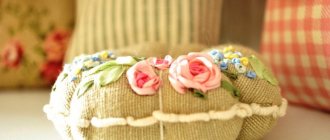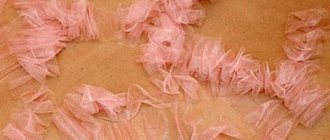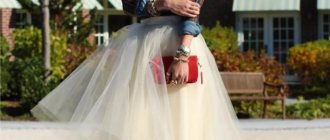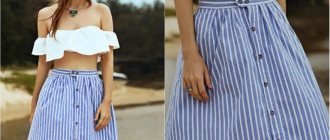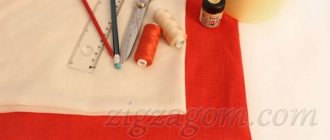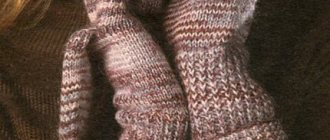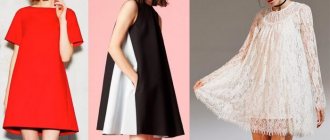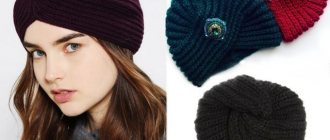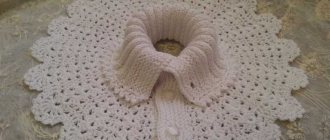Who is the style suitable for?
The peculiarity of the shape of the skirt is a visual reduction in the volume of the waist, hips and lengthening of the legs. These undoubted advantages make the model especially attractive to women of different ages and body types. “Trapezoid” suits young and slender girls with a model figure and those in the Plus size category.
An “A” silhouette skirt looks equally good on tall and thin girls in the “mini” version and on women with curvy figures of short stature in the “midi” and “maxi” versions.
Recommendations for women of different body types and age groups:
- For young and slender girls, the skirt can be “mini” or “midi”. The product can be with a tight fit at the waist, as well as with pleats or gathering at the waist and hips. The “maxi” option is not recommended for everyday wear and is only suitable for exceptional occasions.
- For women with an hourglass body type, as well as for curvy figures with the correct proportions (“Rubensian” type), A-line skirts with a length to the knee line or slightly below it are suitable. The style of the skirts should not be overloaded with excess volume in the hips; infrequent vertical folds or “wrap” are recommended.
- For women of small stature with a lower body type (“pear”), the ideal solution would be an “A-line” skirt with a tight fit at the waist without yokes or horizontal undercuts. Additional volume in the hip area in the form of gathers and folds should be excluded. The optimal skirt length for this category of women is just above the knee, to the middle of the knee, “French” length.
In order not to violate the correct proportions, the length of the A-line skirt should visually be greater than the width of the hips. The “A-line” skirt is a universal item of women’s wardrobe; it can be combined with almost any top, from simple cotton T-shirts to jackets, short coats and short fur coats.
This ideal belt item can be perfectly combined with blouses, T-shirts, turtlenecks or warm sweaters. The main thing is that this combination is correct in style, color and shape.
Shoes for an A-line skirt are selected depending on its length and according to the specific occasion. For example, to create an image with a short skirt, high-heeled shoes are suitable, and for a maxi skirt, a combination with flat shoes or solid soles - sandals, ballet flats, light summer slippers, Romans or clogs - will be very organic.
Taking measurements and calculating fabric
Sewing a skirt begins with choosing a style, taking measurements and calculating the material.
Figure measurement
The pattern of an “A” silhouette skirt is made using a straight skirt design, for the construction of which the following measurements are required:
| Code name | Decoding |
| St | half waist circumference |
| Sat | semi-hip circumference |
| Wb | hip height |
| Di | length of the product |
To make a skirt design with an offset waist, additional measurements are taken - a new waist line is marked on the figure with a visual horizontal line (optional) and measurements are taken using this guideline.
A-line skirt. Pattern: First you need to determine the size.
In addition to absolute measurements, to draw a design drawing you will need increases for freedom of fit at the waist (Pt) and at the hips (Pb). These values are constant and change only in connection with fashion trends in clothing design.
Fabric calculation
To calculate the fabric for a skirt, 2 measurements are taken - the length of the product and the circumference of the hips. Measuring the semi-circumference of the hips (Sb) is necessary in order to calculate whether the finished skirt patterns will fit at a certain fabric width. The length of the skirt (Di) is necessary in order to calculate the required consumption of a piece of fabric for the shaped length of the skirt, taking into account all the cutting details with allowances, with a reserve of fabric for spreading the patterns.
Approximate calculation of fabric with a fabric width of 150.0 cm for an A-line skirt for a figure with a hip volume of 120.0 cm:
Estimated length of the piece = 90.0 cm (Di in g/v) + 15.0 cm (waist allowance) + 4.0 cm (bottom hem) + 10.0-20.0 cm (reserve for other allowances and expansion patterns) = 120.0-125.0 cm.
In addition, when calculating the fabric, you need to take into account the direction of the warp thread (when cutting “on the bias” there is a completely different method of calculation), the direction of the pattern (check, strip or coupon) and the width of the fabric. For example, with a canvas width of 110.0-130.0 cm, the estimated length of the piece is increased by 2 times.
A-line Skirt Pattern
Taking measurements
First of all, we need to take measurements for the skirt and calculate how much fabric we need for sewing. To create a pattern for the base of the skirt, you need to take three measurements:
- waist circumference
- hip girth
- skirt length
Read more about how to properly take measurements for a skirt here.
Calculation of fabric for an a-line skirt
We take the fabric based on the length of the A-line skirt ; if the width of the fabric is 1.5 m, then this width will be sufficient with a margin for hip volumes of 100 and 120 cm)). That is, when calculating, we must proceed from the desired length of the skirt + a margin of 10-20 cm for allowances (5 cm) and belt (15 cm).
We cut the skirt in such a way that the grain thread on the fabric (where the edge is) runs vertically along the center of the front and back of the skirt. If you want to cut on the bias, then the fabric calculation will be larger and completely different.
You may ask the question: why cut on the bias, creating unnecessary troubles for yourself, if it’s so easy to cut along the grain? There are such interesting patterns on fabrics, or an invented image of a skirt in your head, when, for example, a stripe should go on an oblique, or lay out the fabric so that the pattern on the seams lies in a certain way. In order for your imagination to run wild, you need a certain supply of fabric that will allow you to do this in order to lay out the A-line skirt pattern on the fabric in the right way.
Watch also the video about how cut an a-line skirt striped fabric:
Pattern base
To construct a skirt of any style, including “A-Line,” the design of a classic straight skirt is used.
On this basic basis, through modeling, you can sew a large number of different models:
- pencil skirt;
- skirt with buttons (clasp);
- skirt “balloon”, “tulip”;
- wrap skirt;
- skirt with pleats and yokes.
Step-by-step implementation of the base design:
Note: Raise the “T₂” point vertically upward by 1.0-2.0 cm. This is the difference between the length of the skirt from the floor in the middle of the front and the length of the skirt from the floor along the side seam.
To create an A-line skirt, the straight classic skirt patterns should be cut into 4 parts (see diagram above). Then, aligning the sides of the darts in pairs, open and spread the skirt along the bottom. The product can be created with additional volume by adding 3.0-10.0 cm to both sides of the side seam along the bottom.
The layout of the patterns can be done in the opposite direction. However, then you need to take into account the location of the pattern or shade of the fabric.
The extension of the skirt should be formed by smooth curved lines along all seams of the product.
Advantages
Many fashionistas claim that this option is similar to a regular apron. But they do not take into account fashion trends, which, on the contrary, extol this type of cut. Wrap skirts are a unique wardrobe item that has many advantages compared to their standard counterparts:
Incredible wrap skirt
- An original cut that can be interpreted in completely different guises.
- You can change the connection location each time. You can tie the parts in front or on the side.
- Comfortable and practical, so they do not restrict movement.
- Suitable for almost any figure. Especially if the fabric is chosen correctly from the beginning. For example, the staple, thanks to its texture, corrects minor defects.
- Suitable for any event - for a walk, to work, to a restaurant.
The advantages of such things
The main thing is that when you gain extra pounds, you do not need to alter the product, since the cut allows you to “increase or decrease” in accordance with the parameters of your figure.
Textile
A-line skirts are made from absolutely any material. The choice of material depends on the season, the desired image, purpose and personal preference of the woman.
Denim
Jeans items rarely go unclaimed in the wardrobe, and denim skirts even more so. This is a practical and especially popular item among women of any age and body type. Denim A-line skirts of any length can be used all year round as casual or work wear.
They go with any top and almost any shoe, from simple beach flip-flops to long leather over the knee boots or wide-top ankle boots.
Leather
The “Trapezoid” skirt (the pattern above is also suitable for leather) can be sewn from a natural sheet of leather, from high-quality elastic leatherette, eco-leather or suede. Leather products have always been considered an item of special luxury, due to the characteristics of the material, its plasticity and high aesthetic qualities.
The A-line skirt made of leather perfectly fits the figure at the waist and upper hips, and the flaring downwards forms beautiful tails and hides all the imperfections of the physique.
Knitted
Knitted A-line skirts are loved by most women of all ages. They are comfortable, fit perfectly and are very practical. Skirts made of thin or thick (voluminous) knitwear are all-season. They are combined with light blouses and T-shirts, as well as with warm sweaters and turtlenecks.
Depending on the style, A-line knitted skirts are worn with solid-soled shoes, sandals, open sandals, ballet flats, high-heeled shoes, and in winter - with high boots, ankle boots, ankle boots or duttons.
Silk
Silk A-line skirts are preferred by romantic people. Light, playful models in the “mini” version are preferable for young girls. The property of the fabric involves the use of numerous folds, flounces or ruffles. Options for silk midi and maxi skirts fit perfectly into the summer wardrobe of older ladies.
Models of A-line silk skirts are combined with simple T-shirts, blouses, and light cotton turtlenecks.
Chiffon
Flying, spectacular chiffon skirts give a woman a special mood. They are perfect for creating a mysterious, romantic image. Chiffon A-line skirts are made with an oblique cut, multi-layered, with abundant ruffles and flounces.
The look with an airy chiffon skirt will go well with stylish sandals or high-heeled pumps.
Length
The “A-line” skirt (the pattern of the model is presented above) is good in any length. Thin, slender girls and women can afford any skirt length - in any version, the skirt will look great on such a figure. For women of average build and plus size, a length below the knee and a floor-length skirt is suitable.
Short
The mini skirt is suitable for girls, teenagers and young girls with beautiful slender legs and narrow hips. The “A” silhouette visually enlarges the hip area, and models with yokes, pleats, gathers at the waist or from the hip completely hide this deficiency.
For short A-line skirts, poplin, silk, chiffon, woolen or suit fabric, leather, and suede are recommended.
Midi
A midi skirt is a universal wardrobe item for any woman. This model does not cover the entire figure, which means it will not look too bulky on a fuller figure.
At the same time, the skirt fits tightly to the waist and, due to the flaring towards the bottom, hides the excess volume of the hips and legs. Well-chosen tops, shoes and accessories make the look very feminine and stylish.
Long
The long A-line skirt is a more festive, evening version of the product, which will add elegance, femininity and romanticism to the image.
This outfit is more suitable for tall women, as a floor-length skirt visually reduces height and increases the figure in the hips.
How to sew it yourself
A wraparound skirt with ties, the pattern of which is almost completely similar to a circle skirt, is considered simple in terms of tailoring. Quick sewing is done as follows:
- Prepare a piece of fabric with a width of 70 cm and a length of 1.2-1.5 m.
- Fold the fabric several times.
- Cut the corner under the waist.
- Make the bottom semicircular.
- Sew strips that will serve as ties for the skirt.
- Process textile sections.
You might be interested in: Methods for sewing knitted fabric using a regular sewing machine
Sewing without a pattern
An easy manufacturing option using the half-sun technique takes little time.
With elastic band
The “Trapezoid” skirt (the pattern for the model with elastic is given below) is a comfortable and beautiful thing at the same time that you can sew with your own hands, even without any special sewing skills. These skirts can be of different lengths. Short skirts with elastic are suitable for girls, teenagers and young girls. Midi and maxi skirts are very popular among older women.
To create a pattern for a skirt with an elastic band, you will need the same patterns for the basics of a classic straight skirt. Next, as a result of modeling on paper or directly on fabric, the skirt is cut out taking into account the necessary seam allowances.
The pattern of an a-line skirt with an elastic band is constructed as follows:
- Cut the patterns for the base of the straight skirt along the verticals, lowered from the ends of the darts of the front and back halves of the skirt.
- Place the resulting parts of the base on a large piece of paper or fabric. To begin, align both halves together in pairs, and then move the patterns apart to the required assembly size.
- Trace the patterns and decorate the waist, bottom and side seam lines with smooth curved lines.
For a midi skirt (pattern No. 1) with a moderate volume of elastic, the spread of the patterns can be from 5.0 to 12.0 cm. For a mini skirt (pattern No. 2) with a medium volume of gathering under an elastic band, this value can be increased due to additional expansion of the side seam (≈ 20.0 cm in total).
A short skirt with an elastic band with a large volume at the waist (pattern No. 3) can be cut out with a straight line and with one connecting seam at the back.
The “Trapezoid” skirt with elastic has the following technological sewing sequence:
- Lay out the skirt pattern on the fabric, taking into account the direction of the main thread, the fold location and seam allowances.
- Make trimming of the skirt parts and seam allowances - 1.0 cm along the waist line, 1.5 cm along the side seam, 2.5 cm along the bottom of the skirt. Cut out the skirt parts.
- Pin paired side sections, stitch, overlock the sections and iron towards the back.
- Pin a belt folded in half to the top edge of the skirt. Having specified its length along the top, sew the short sides and stitch the waistband, leaving a small hole (1.0-1.5 cm) for threading the elastic. The elastic waistband can be made narrow or wide (several rows of rubber tape). To finish the top seam in such skirts, decorative wide elastic bands are used. A skirt with an elastic band can be sewn without a sewing belt. When sewing light natural silk, chiffon or organza, sewing rubber threads are used as an elastic band.
- Insert a rubber band into the belt and secure the ends.
- Finish the edge of the belt with an overlocker.
- Finish the bottom of the skirt with a hem seam with an open or closed cut.
Sew a wrap skirt: patterns for beginners
Beginners should give up the idea of using overly complex patterns. You need to start with simple ones. But this does not mean that you won’t be able to sew a beautiful skirt. Quite the contrary, the result of the work will definitely please you.
Light summer skirt
The simplest wrap skirt can be sewn for the summer, spending no more than an hour on it. For such a skirt you will need light fabric with a pattern (chiffon, crepe chiffon).
For sewing you will need:
- fabric, width from 140 cm, length equal to the length of the skirt + 10 cm for the belt + 2 cm for finishing the edges and seam allowance;
- threads in the color of the fabric;
- sewing machine;
- scissors;
- tailor's chalk.
Sewing algorithm:
- Cut 10 cm from the fabric for the belt. The 2 edged sides are the sides of the skirt. The edges can be cut and processed together with the bottom of the skirt by machine, folding the edge.
- You need to sew a belt to the raw side of the skirt. First you need to lay the darts. Try on your future skirt. Based on how the fabric hugs the waist and hips, you will see if darts are needed.
- The excess fabric formed in the waist area should be placed in 2 darts.
- Pin the dart fabric onto the fabric.
- Having laid out the fabric on the table, edit the darts so that they are the same, mark the lines of the darts along which to lay the stitch on the fabric.
- Stitch by machine.
- Iron the darts.
- Sew the belt piece to the skirt, matching the lines of the middle of the skirt and the belt.
- Sew the knotted parts of the belt and turn them inside out. Sew the unsewn edge of the waistband to the skirt. The skirt is ready.
Beach skirt
Short beach skirts made of light fabrics will look good on girls with slender figures.
The basis of such a skirt is a scarf, on the 2 lower sides of which 1 or 2 flounces of different widths are sewn.
The length of the strip for each shuttlecock will be equal to the sum of the 2 sides of the scarf, multiplied by 1.5. The width of the shuttlecock is at least 15 cm.
Long skirt
A long wrap skirt is sewn according to the same principle as a summer beach skirt, but the fabric needs to be suit or denim.
Along the wrap line, you can provide finishing: embroidery, decorative buttons or other decorative fastener.
The belt in this model will not be secured with ties, but will be fastened with a button. There is no need to cut out the ties. The belt must be reinforced with adhesive interlining.
Semi-sun skirt with wrap
To sew a wraparound skirt, you don’t need a pattern at all. The construction of the skirt is done directly on the fabric.
The amount of fabric depends on the length of the skirt. For a half-sun skirt you will need at least 2 meters of fabric + 10 cm for the belt.
Important! Before cutting, the material must be washed or steamed with an iron so that it shrinks.
For sewing you will need:
- textile,
- scissors, large ruler or measuring tape,
- tailor's chalk,
- pins,
- threads to match the fabric,
- sewing machine.
To sew a skirt, follow these steps:
- Immediately cut a strip of fabric 10 cm wide for the belt. Fold the remaining fabric in half crosswise, matching the edges. Lay the material out on the floor or table. Pin the layers together in several places.
- Now you need to draw a circle along the waist line. Add 30-40 cm to your waist circumference.
- Now you need to calculate the diameter of the semicircle to mark the waist line on the fabric. Use the formula R=P/(2π), where P is waist circumference + wrap width. π=3.14. With a waist width of 70 cm and a wrap width of 30 cm, the calculation will be as follows. 70+30=100; R=100/2*3.14=15.9.
- Now you need to make several marks with chalk on the fabric, starting from the top corner with a fold of 15.9 cm. Applying 1 end of the ruler to the corner of the fabric where the fold is, and moving the second in a circle, put several marks on the fabric, moving to the other edge of the fabric.
- Connect the marks. From the resulting line, measure down the length of the skirt. The outer edges can be slightly rounded. If left as is, the skirt will be straight.
- Cut out the skirt. If everything is done correctly, the result is a semicircle.
- The edges of the skirt can be left with a hem, or you can process them by machine. To do this, cut off the edge, fold the edge twice and stitch it on the machine.
- The next step is to sew on the belt. Place the belt on the skirt along the waistline with right sides facing each other, aligning the marks for the middle of the belt and the middle of the skirt. Pin together.
- Baste along the waist line with threads. Machine sew the waistband.
- Next, you need to sew the free ends of the belt piece and turn it inside out. Sew the belt to the skirt along the waistline. Finish the bottom of the skirt with a roller stitch. All that remains is to iron the skirt and you can wear it.
A-line wrap skirt
To create a pattern for an A-line wrap skirt, the basic pattern of a straight skirt is taken as a basis. After the wrap is added to the skirt pattern, the sides of the pattern need to be expanded towards the bottom.
This needs to be done both on the pattern of the back panel and the front one. To do this, measure 5-6 cm from the intersection of the bottom and side lines. Draw a straight line from the hip line to this point. From the bottom point of this line, measure upward 1-1.5 cm. Connect this point and the bottom of the skirt with a smooth line.
An A-line skirt will look good in suit fabric, denim, suede and leather. As a fastener, you can use not only ties, but also a decorative zipper or make a series of large beautiful buttons.
Cut out all the details of the skirt from fabric. Cut out the belt. If the skirt is fixed with ties, then its length should be equal to 2 waist circumferences + at least 30 cm. The width of the belt part is 10 cm. Sew up the darts, iron them from the center to the sides.
Sew the side seams and finish the edges using an overlocker or zigzag stitch. Finish the edges of the skirt and hem the bottom. If the skirt is leather or suede, the sides and bottom can be treated with a special trim. All that remains is to sew on the belt, as described above.
Skirt with elastic
An elastic skirt with a flounce will take a little more time than sewing the simplest wrap skirt. But the result is worth it. A drawstring will be attached to the belt, into which an elastic band will be inserted.
This skirt is made of chiffon and lined. At the front, the lower corners of the overlap are rounded, and a ruffle is sewn along the entire lower edge of the skirt.
To sew a skirt for size 44-48 you will need:
- chiffon - 1.2 m, width 145 cm,
- for viscose lining - 0.6 m, with a fabric width of 145 cm,
- elastic band, 3 cm wide - 0.8 m,
- scissors,
- threads in the color of the fabric,
- sewing machine,
- thin needle for sewing machine,
- pins,
- measuring tape or large ruler,
- tailor's chalk.
How to make a pattern? The length of the finished skirt at the back is 55 cm. The back panel of the skirt is a rectangle, the top and bottom sides of which are equal to half the circumference of the hips + 4 cm. The sides are equal to 55 cm:
- As a basis for the pattern of the front panel, take half the pattern of the rear panel, you need to add a 30 cm wide wrapper to it. Now you need to draw a smooth line diagonally from the bottom point of the shelf to the top outer point of the overlap.
- Cut out all parts of the product from the main fabric and the back with a seam allowance of 1 cm. From the main fabric, cut out a frill, the length of which is equal to two lengths of the bottom of the skirt and a width of 13 cm, and a belt, the length of which is equal to the girth of the hips + 2 wraps.
- Using needles, pin together the parts from the main fabric and the lining. Sew the side seams of the product and use an overlocker or zigzag stitch. Process 1 large and 2 small sides of the frill in the same way. Machine stitch along the raw side with the widest pitch possible.
- Gather the ruffle onto a thread by pulling 1 thread from the stitch on one side. Tie knots on both sides of the ruffle. Place the ruffle and the bottom edge of the product facing each other and stitch. Process the cut using an overlocker or zigzag.
- Overlap each other along the waist line and secure with a stitch or pins. Sew the waistband to the top of the product, leaving an unstitched space for inserting an elastic band. Place a stitch in the center of the waistband and insert the elastic into the bottom of the waistband. Thread the rubber band. All is ready!
A wrap skirt is currently at the peak of popularity and will suit any figure. Such a skirt not only gives the whole look femininity, even in maxi length, it looks very attractive. As you have already seen, sewing a wrap skirt is not at all difficult.
With buttons
An interesting idea in the design of the A-line skirt was the use of button closure. In this case, buttons are not only necessary accessories for fastening, but also an element of decorative finishing of the skirt. The button closure can be located on the front, side or back.
A modern print has become the use of large buttons of a contrasting color on mini skirts made of suit fabrics and, vice versa, small fittings in 1 or 2 rows in the main tone of the fabric.
With smell
An interesting trend of the last season was the A-line wrap skirt. Buttons, wide “bow” belts, and all kinds of buckles or brooches are used as retaining accessories in such products. The piquant feature of the wraparound model is the beveled upper half of the skirt and the bottom with a corner.
Skirts made of thick suiting or woolen fabric are trimmed with contrasting trim along the length of the wrap, gold or silver decorative buttons and braid.
Sewing an a-line skirt
We cut out the skirt from the fabric, taking into account the allowances on the sides and waist - 1 cm, the allowance for hemming the bottom - 3-4 cm.
We pin the side seams of the skirt, do a fitting and machine sew these seams. Don't forget to leave room on the left side for the fastener. We will sew a hidden zipper there. Read more about how to sew a zipper here.
See also: Types of zippers: secret, tractor. How to sew a zipper?
We process the allowances with a zig-zag or overlock and iron them.
Sew the belt to the top of the A-line skirt , folding it face to face with the skirt. Make a loop on the belt and sew on a button.
Now we process the bottom of the skirt with a double hem. To do this, fold the hem allowance 1 cm onto the wrong side of the skirt and iron it. Then we fold the ironed seam allowance again, but this time by 2 cm, iron it again and, after pinning or basting, sew it with a straight stitch on a machine. Thus, the unfinished edge of the bottom of the skirt was hidden inside.
If the fabric does not allow you to hem the bottom using a machine, make 4 cm allowances and hem the bottom of the skirt with a blind seam by hand. It's a little messy, but the beauty is worth it!
Iron the finished skirt.
If you wish, you can also add pockets in the side seams of the skirt. They will look very stylish.
We have looked at almost the easiest way to sew an a-line skirt . Why did I use the word “almost”? Because sewing a skirt with a belt still requires a little skill. It's even easier to sew it with an elastic band. Then you won't have to cut out the lobar belt. Just measure your waist circumference not with a centimeter, but with a directly purchased elastic band (5 cm wide), measure with a slight tension around the waist, but so that it does not squeeze when you next wear the skirt.
See also: PLEADED A-line skirt. Constructing a pattern
Watch the video about the A-line wrap skirt:
Pleated
The “A-line” skirt model with pleats – deep, textured or small, “pleated” – always remains in demand. Pleated skirts are suitable for creating a romantic look and a business suit.
Skirts made from thick suit fabrics are made for work or school, for example, for schoolgirls during the fall-winter period. Fluffy and light skirts for summer are made from airy fabrics - silk, chiffon, organza or satin.
For many years, the A-line skirt has been a favorite model of women. Based on the classic straight skirt (the pattern is presented above), you can create a whole family of “A”-line skirts with your own hands. The shape of the skirt is suitable for creating an image of any style, for any season and for all categories of women.
Author: Severyanochka
Who suits this style?
A distinctive feature of this product model is that it can be worn by any body type. You just need to choose the right length and pattern.
You might be interested in this: Patterns and sewing of a country hammock with your own hands
Basic tips when choosing an A-line skirt:
- For girls with an apple figure, the classic style of this skirt, just below the knee, is well suited. This product will simply elegantly emphasize the hips and buttocks, while hiding extra pounds.
Types of female figures
- For women with an inverted triangle body, such a skirt will come in handy. It increases downwards, which will help to visually make the hips more voluminous and thus balance the parameters;
- Women with low weight can choose any model of a-line skirt. But in this case, you need to choose the right pattern on the product. It is advisable to give preference to lines or squares.
